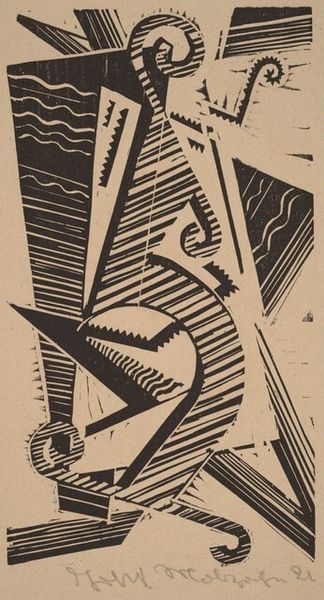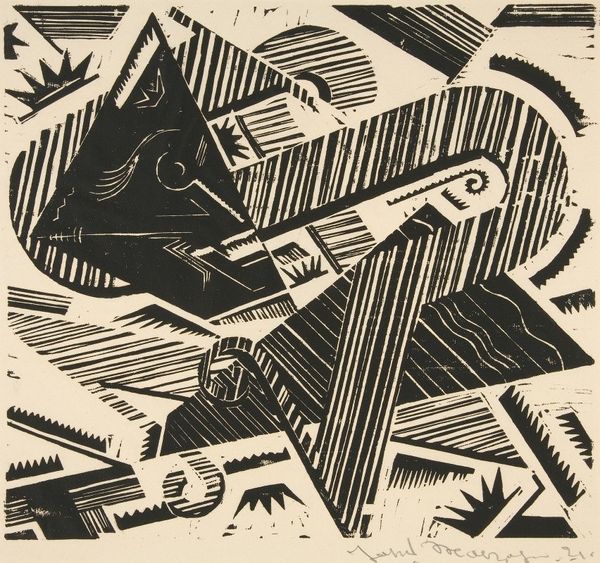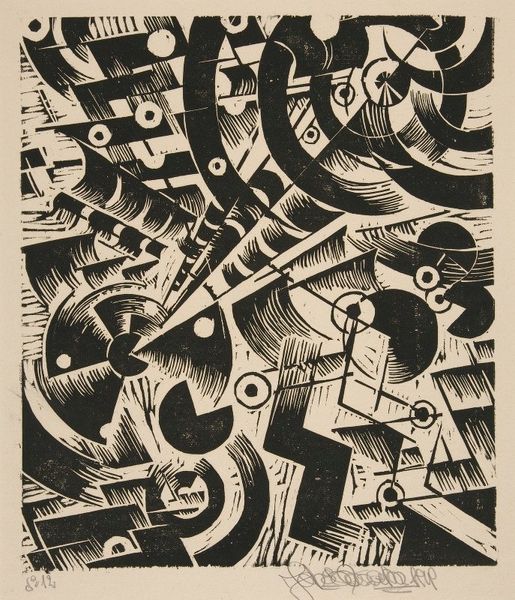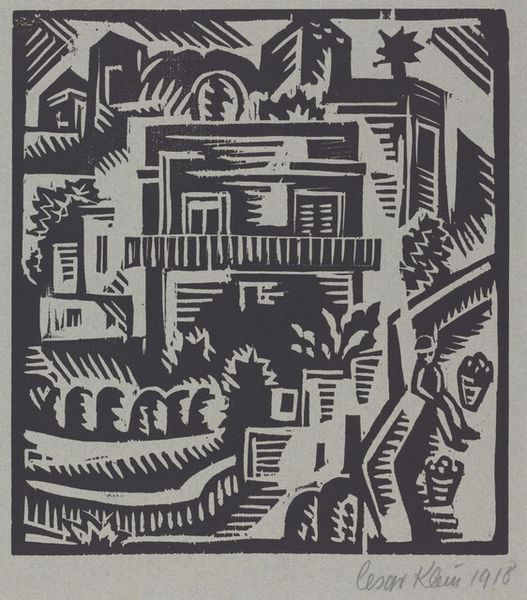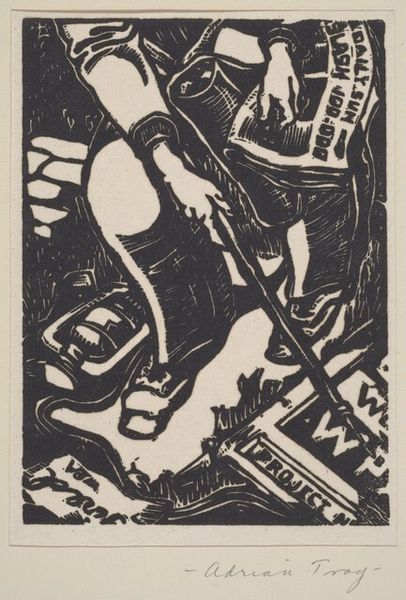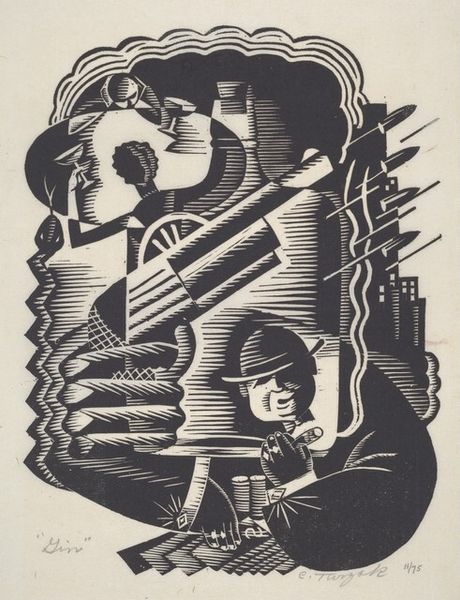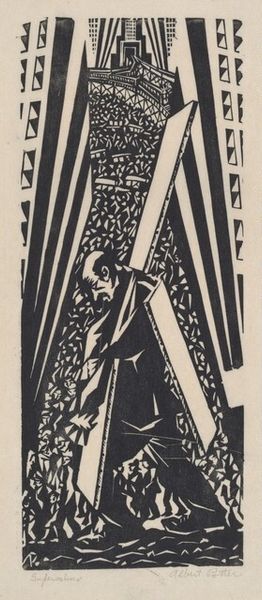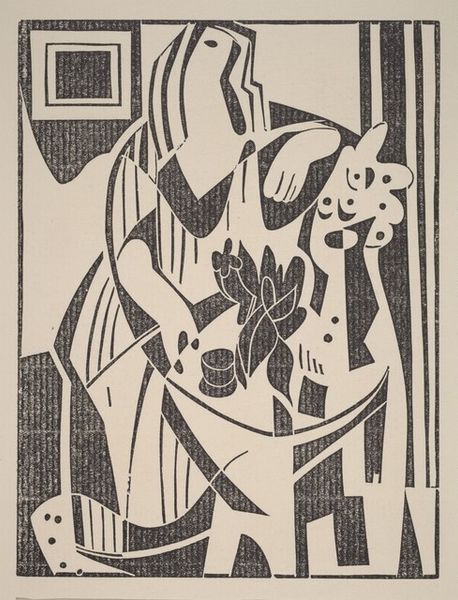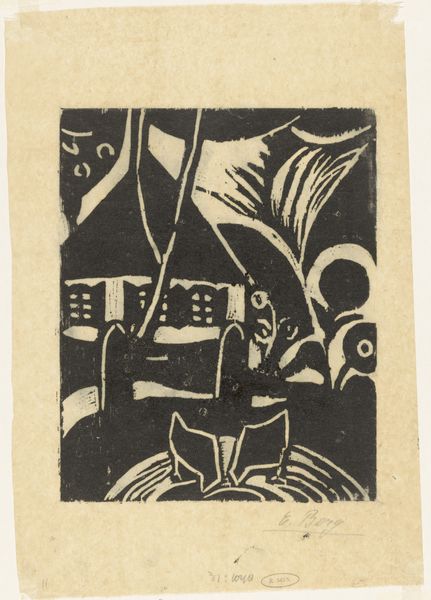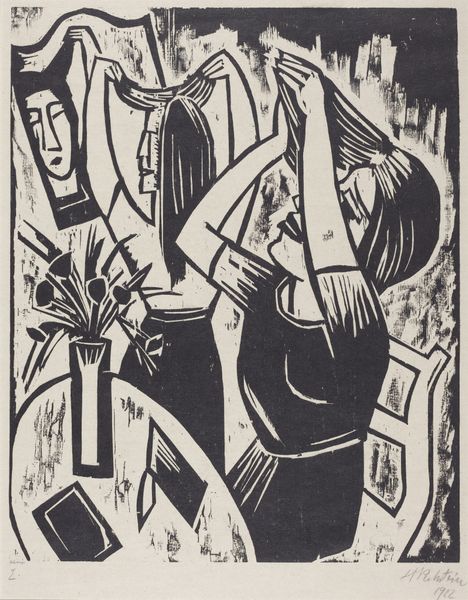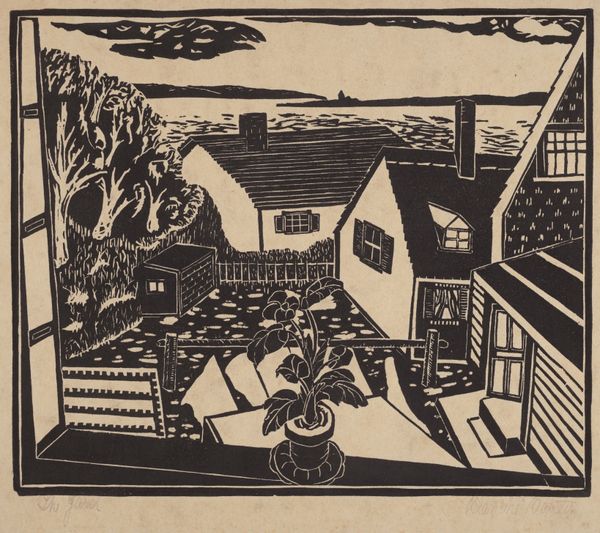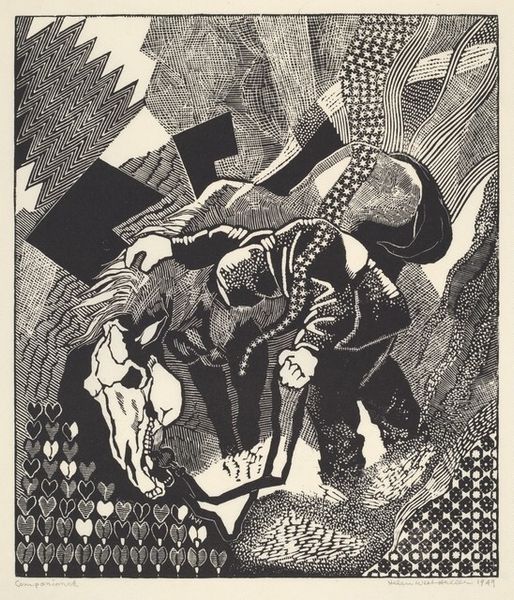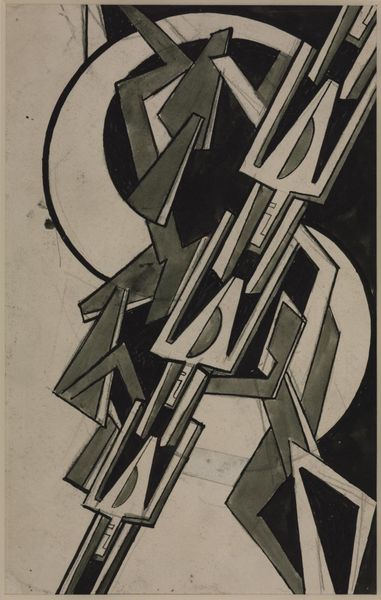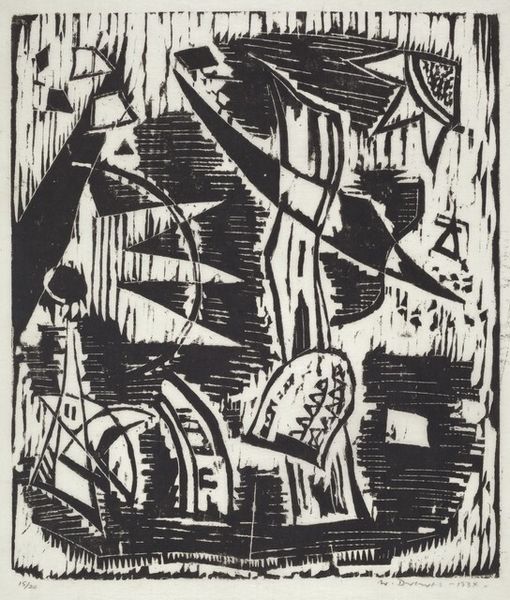
print, woodcut
#
narrative-art
# print
#
landscape
#
german-expressionism
#
figuration
#
expressionism
#
woodcut
Dimensions: plate: 25.9 × 20.1 cm (10 3/16 × 7 15/16 in.) sheet: 33.6 × 25.2 cm (13 1/4 × 9 15/16 in.)
Copyright: National Gallery of Art: CC0 1.0
Curator: This image screams desperation, doesn’t it? The harsh blacks and whites, the chaotic swirling lines—it’s visceral. Editor: Indeed. What we’re looking at is “Burning House,” a woodcut created in 1918 by the German artist Maria Uhden. It's an intriguing piece embedded within the German Expressionist movement. Curator: Uhden’s composition reflects anxieties around institutional collapse, especially given the wartime context. That lone figure on the ladder, the fleeing animal... it resonates with broader societal fears, doesn’t it? Perhaps of male leadership under threat in a changing landscape? Editor: I think so. This work was created during a period of immense social and political upheaval in Germany, when established power structures were facing significant challenges, which she had personally experienced due to war. The intense contrasts in this medium heighten the scene's dramatic tension. Considering woodcut printing techniques from the period, it almost reflects the destruction by way of production method. Curator: Right, the very act of carving away at the wood to create this image mirrors the destruction she’s depicting. And notice the tilted building on the left, seemingly being vacated with haste; that collapsing structure is such a clear symbol of crumbling power dynamics. Do you suppose, though, that she saw opportunities within it for women’s increased public and private power? I see this narrative and wonder if there is not also some excitement beneath it. Editor: That's an astute observation. Although the immediate impression is indeed destruction and desperation, the possibility of social reorganization could very well be incorporated into that image. Consider the time it was produced: 1918. This was a year of seismic shifts across Europe, opening up new political avenues previously unattainable for women. The art world also opened more to women during this time. Her place as an active participant demonstrates that those institutional shifts took place during this time, whether implicitly or explicitly! Curator: It leaves you pondering what these events might mean for people outside of normative convention—beyond the doom-and-gloom, even in times of profound destabilization. Editor: Absolutely. Thinking about its cultural value today is more than just historical analysis, it sparks the question: What might a similar destruction allow us to build in its wake?
Comments
No comments
Be the first to comment and join the conversation on the ultimate creative platform.
